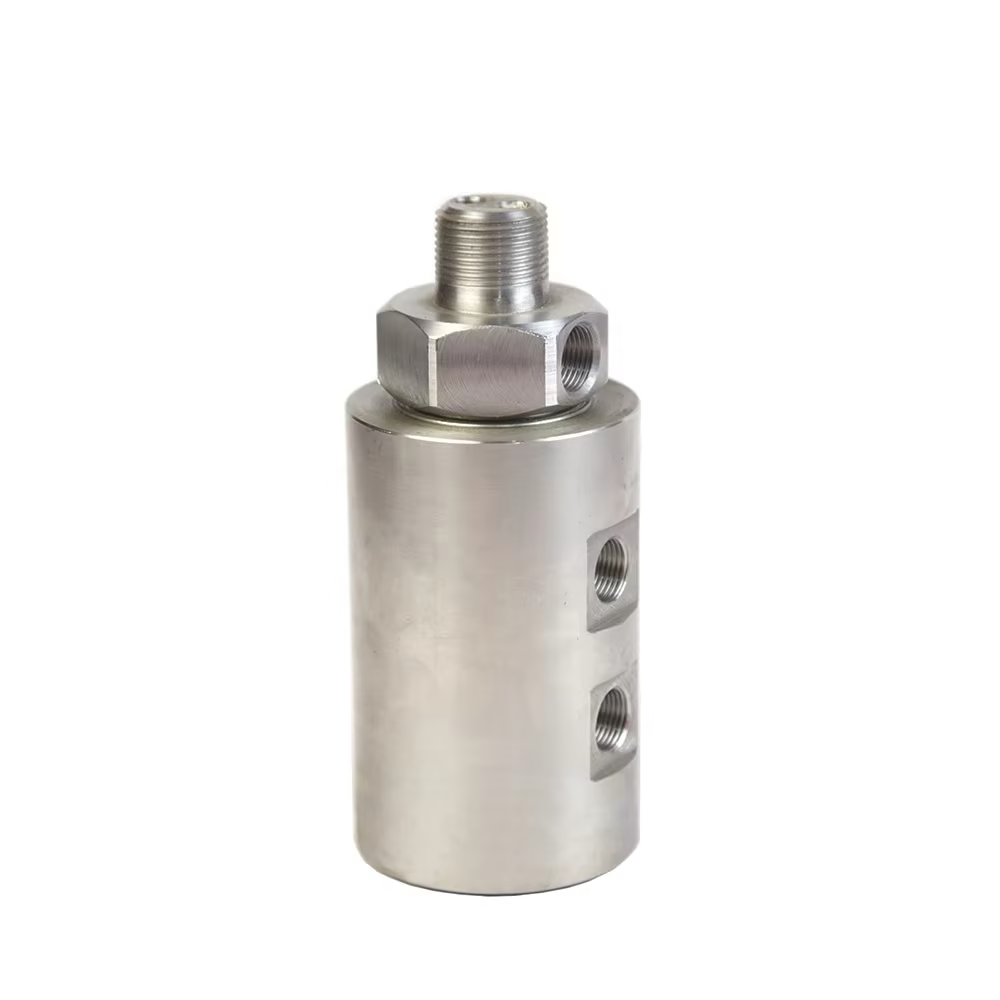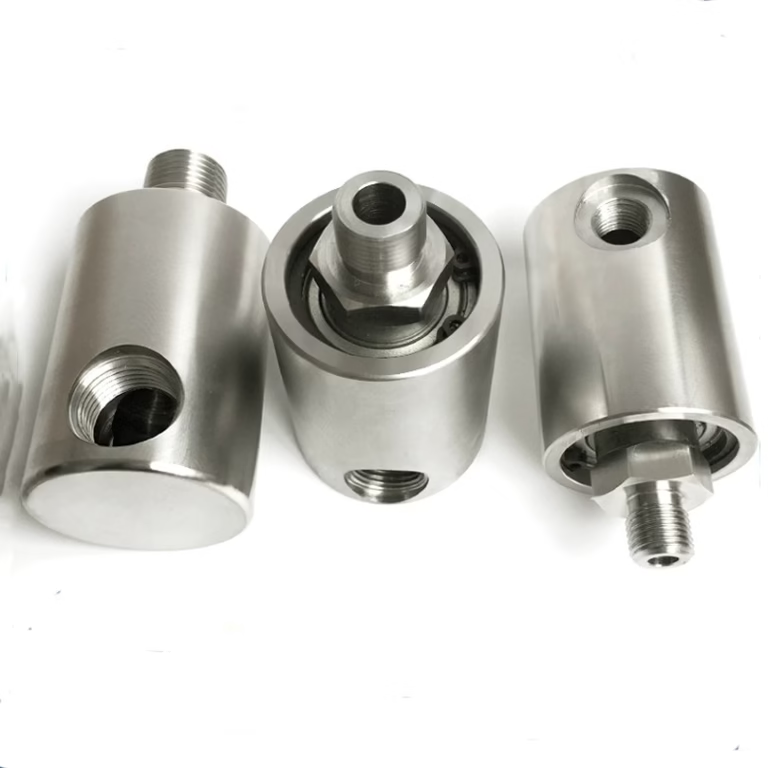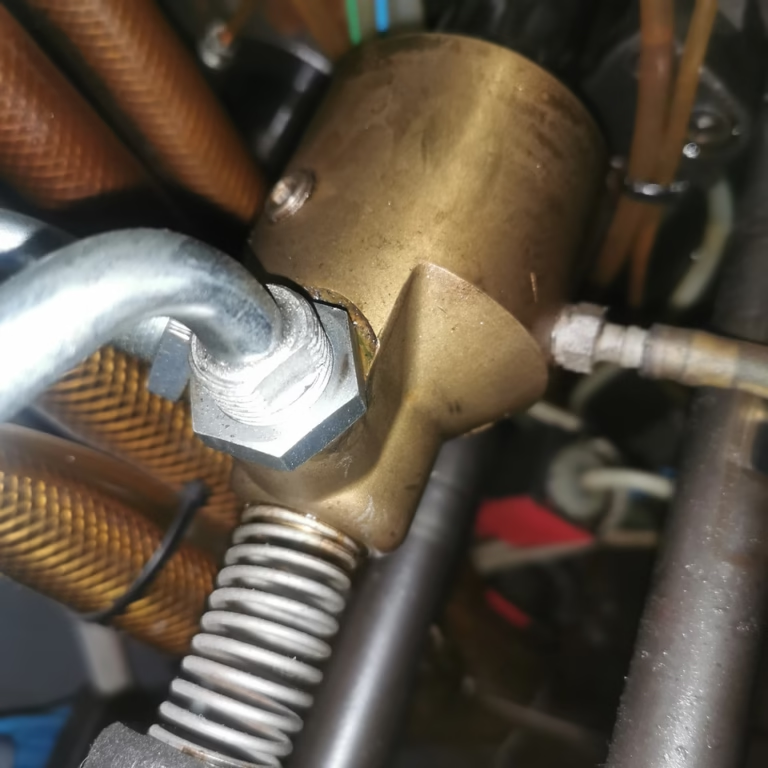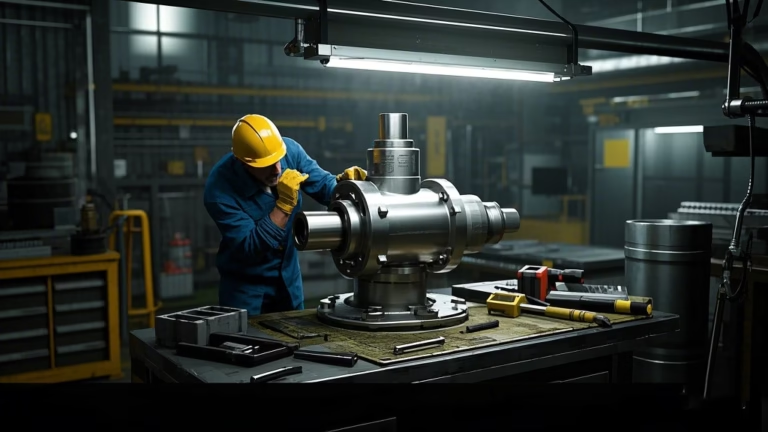What is a Hydraulic Rotary Union?
A hydraulic rotary union (also known as a rotary joint, hydraulic swivel, or rotating coupling) is a precision-engineered mechanical device designed to transfer pressurized hydraulic fluid between stationary and rotating components in machinery. It ensures leak-free, continuous fluid flow while accommodating rotational movement, making it indispensable in applications where dynamic motion and hydraulic power transmission coexist.
Core Components & Functionality
Key Parts
Rotating Shaft: Connects to the moving part (e.g., a wind turbine rotor).
Stationary Housing: Attached to fixed hydraulic lines.
Seals: Multi-lip seals (PTFE, Viton®) prevent leaks under high pressure.
Bearings: Enable smooth rotation (e.g., ball bearings for high RPM).
Ports: Fluid entry/exit points (NPT, BSP, or SAE flange connections).
How It Works
Hydraulic fluid enters the stationary port, flows through the rotating shaft via internal channels, and exits to power actuators, motors, or cylinders on the moving side. Advanced designs use pressure-balanced seals to handle up to 10,000 PSI and graphite springs for thermal expansion compensation.
Applications Across Industries
Hydraulic rotary unions are critical in systems requiring simultaneous rotation and fluid transfer:
Wind Energy: Transfer hydraulic oil to blade pitch control systems in turbines.
Construction Machinery: Enable 360° rotation in excavators, cranes, and drilling rigs.
Manufacturing: Coolant supply to CNC machine spindles.
Marine: Steering and propulsion systems on ships.
Robotics: Hydraulic power delivery to robotic arms.
Types of Hydraulic Rotary Unions
Single-Passage: Transfers one fluid type (common in basic systems).
Multi-Passage: Handles multiple fluids (e.g., oil + coolant) without cross-contamination.
High-Speed: Engineered for RPM-intensive applications (up to 20,000 RPM).
High-Pressure/Temperature: Built with stainless steel and ceramic seals for extreme conditions.
Why Hydraulic Rotary Unions Matter
Efficiency: Minimize energy loss with low-friction bearings and optimized flow paths.
Durability: Corrosion-resistant materials (SS316, carbon steel) extend lifespan in harsh environments.
Safety: Leak-proof designs prevent fluid loss and environmental hazards.
Customization: Adaptable to unique OEM requirements (port sizes, media compatibility).
FAQ: Addressing Common Queries
Q1: How to choose the right hydraulic rotary union?
Match pressure rating (e.g., 3,000 PSI for construction equipment) and temperature range (e.g., -40°C to 200°C).
Select seals based on fluid type (PTFE for chemicals, Viton® for oils).
Q2: What causes hydraulic rotary union failure?
Seal wear: Replace seals every 2,000 operating hours.
Misalignment: Use laser alignment tools during installation.
Contamination: Install inline filters to block debris.
Q3: Can rotary unions handle multiple fluids?
Yes, multi-passage unions isolate fluids (e.g., hydraulic oil + water-glycol) using separate channels and seals.
Q4: Are there industry standards for hydraulic rotary unions?
ISO 9001: Quality management.
ATEX: Explosion-proof certification for hazardous areas.
SAE J518: Flange dimensions for hydraulic ports.
Conclusion
A hydraulic rotary union bridges the gap between stationary and rotating systems, enabling efficient power transmission in industries from renewable energy to heavy machinery. By understanding its design, applications, and maintenance best practices, engineers can optimize performance and reduce downtime. For tailored solutions, consult manufacturers offering ISO-certified customization and 24/7 technical support.







